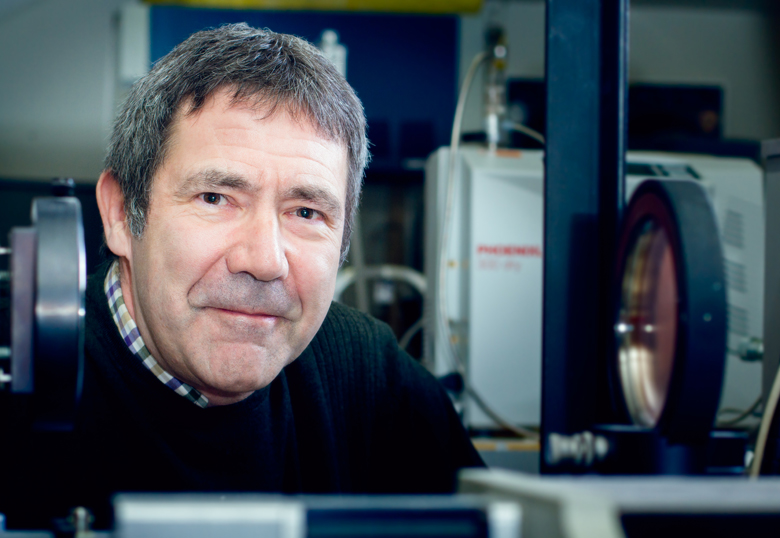Academic research, innovation, student opportunity and industry connection received a huge boost recently as the University of Lethbridge formally joined the Composites Research Network (CRN).
Canada’s leading network for composites research and the major link between academia and major composites industry partners, the CRN acts to bridge the divide between academic activity and industrial need.

“This is a major step forward for the University, putting our research into the hands of industry partners and creating multiple new opportunities for researchers and students alike,” says Dr. David Naylor, Board of Governors’ Research Chair in the Department of Physics and Astronomy and head of the Astronomical Instrumentation Group (AIG). “Being a part of this network will connect us to industry heavyweights like Boeing and Convergent Manufacturing Technologies.”
A composite material is that which is made from two or more constituent materials, when combined, produce a material with different characteristics from the individual materials. Advanced composites are replacing many metal components in use today, particularly in the aerospace industry. Describing composites as the material of the future, Naylor says the opportunities created through his group’s inclusion in the CRN are massive.
“We’re now partnered with Boeing in exploring this new realm of composite materials,” he says. “Composites are stronger than steel, lightweight, have virtually no conductivity, and for what we do in space, they are the perfect answer.”
As an example of the importance of composites in industry, Naylor points to Boeing and its design of the Boeing 787 aircraft, of which more than 50 per cent of the material is made from composites. Boeing also operates a satellite division and is heavily involved with the National Aeronautics and Space Administration (NASA).
The U of L joins the CRN as the second Alberta node, along with University of Alberta. The hub and main node of the network exists at the University of British Columbia, while University of Victoria, UBC-Okanagan, Camosun College, Canadian Light Source, Composites Innovation Centre and McGill University make up the rest of the academic nodes.
AIG has carved out an impeccable international reputation in recent years. Its work as part of the Herschel-SPIRE Consortium earned Naylor a Royal Astronomical Society award. Recently AIG was awarded $500,000 from the Canadian Space Agency (Flights and Fieldwork for the Advancement of Science and Technology grant) to train up-and-coming astronomers and engineers while contributing to Canada’s ability to play leading roles in future space astronomy missions.
“Composites are the future. The majority of new materials, whether it’s hot tubs, tractors, airplanes, spacecraft, bicycles, Lamborghinis, will be built out of composites. People are realizing that these advanced manufacturing techniques and products will end up everywhere in society,” says Naylor, whose group runs the leading cryogenic test facility in the country, allowing for the testing of components in extremely cold temperatures.
“We’re the only group that can do this kind of testing,” he says. “We can test material properties at extremely low temperatures, down to .3 Kelvin, which is 10 times lower than the Big Bang, the coldest part of the universe. You wouldn’t think that cryogenics would be at a small university such as ours but we are anomalous and we bring a unique skill set. We’re a solution looking for a problem and I think they’ve got problems we can help solve.”
By joining the CRN, Naylor and the AIG are transitioning to a new level of engagement.
“This is a prestigious group that leads the way in composites research. Our involvement in the CRN allows us access to specific training events and laboratory facilities and puts us in a collaborative position with the country’s key stakeholders,” he says. “To have that industry connection and to be a part of a network working to transition academic research into industrial practice is transformative for our group and our students. It will present them with massive opportunities.”

